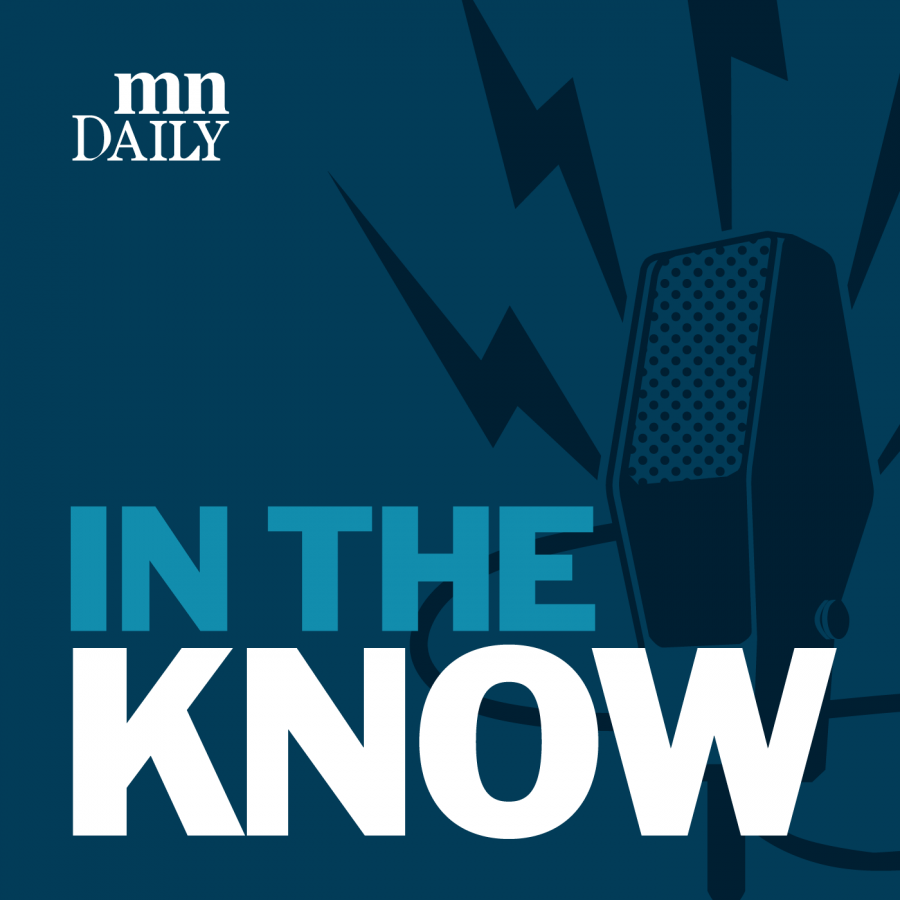MAYA ATHERLY-LARSEN: Hi everyone, I’m Maya Atherly-Larsen, your host from the Minnesota Daily, and you’re tuning into In The Know, the podcast that brings you all the latest on the University of Minnesota.
With the birth of the internet and social media in the last two decades there seems to be a steady increase in misinformation. In an era marked by the relentless progress of technology and AI tools, as discussed in our earlier episodes, and the generation of diverse platforms facilitating information exchange, it can often be overwhelming with the constant barrage of posts, articles and perspectives. In light of this influx of information, media literacy is now more important than ever.
So what is media literacy? Well, there are a few ways to understand it. Rhetorical studies assistant professor Atilla Hallsby explains three different avenues of media literacy.
ATILLA HALLSBY: A first way would be to understand it as a set of compositional and interpretive skills that are specific to a specific media format or genre. In other words, how to write for journalistic purposes or how to create a TikTok video. A second would be an ability to assess media messaging for dangerous or deceptive content for purposes of keeping ourselves safe, so sniffing through a message in order to make sure that we’re not receiving spam or infecting our computer with a virus.
Third would be an awareness of the more or less predictable effects of media upon individuals or groups, which is including, you know, its effects upon persuasion, its effects upon our emotional reactivity and its effects for group mobilization, right? Like, what will happen by releasing this message out into the public.
ATHERLY-LARSEN: Another idea Hallsby mentioned is to use some tricks to stay ahead of misleading messages. This includes preemptive measures, such as pre-bunking, to safeguard against people buying into disinformation that’s about to show up. Media literacy itself is concerned with thinking critically about the media we see and its messages, but critical media studies professor, Gilbert Rodman, introduces an expanded definition of media literacy.

GILBERT RODMAN: There’s another strand of media literacy which says that people should not just be able to read, view, listen with critical ears and to think about, you know, their media consumption in smart and complicated and nuanced ways, but should also be able to produce media of various sorts. You know, there’s one strand of the media literacy sort of crowd which will say that if we’re not teaching people how to produce with the same critical eye and ear and sort of thinking process that we’re asking people to consume, then we’re only doing half the job.
ATHERLY-LARSEN: While it may appear that misinformation and fake news have become more prominent in recent years, the challenges of media literacy and disinformation have persisted throughout history. From the early days of print media to the present, even reputable media outlets have, at times, distributed misinformation despite their typically reliable nature.
RODMAN: You know, let us not forget that some of the strongest drum beats for sort of the invasion of Iraq after Sept. 11 were coming from those good old trustworthy stalwarts of the New York Times and CNN who swore that they had vetted, that there were weapons of mass destruction in Iraq that needed to be taken out and this was not true. You know, this was misinformation and so we need to remember that’s still in play when we’re talking about the phenomenon of misinformation.
Now all that said, social media does not have the same sort of gatekeepers in place that traditional media do, and that one of the reasons traditional media are supposedly better about misinformation is that if you, as a reporter, want to get something in the Minnesota Daily you have teams of people to sort of double check your work and to make sure you verified your sources and so on and so forth, so that the Daily does not publish something that multiple people involved don’t think of is accurate or fair. Whereas if you are simply on a TikTok account, there is no filter except yourself.
ATHERLY-LARSEN: So misinformation is not a new thing, but social media has changed the way we approach it, and so the way we think about media literacy has to change as well.
HALLSBY: There have been different models that have come and then gradually moved into other ways of thinking about it. One of them is the encoding and decoding model where people encode messages into a specific media format, encoding like subliminal messages would be like a real 20th century way of thinking about it.
And then it’s up to the consumer of that message to decode that message for themselves. A second way would be the political economy model which is: what are the interests that are behind the kinds of messages that are being sent to me and how are those interests reflected in the kinds of messages that I’m receiving?
ATHERLY-LARSEN: Hallsby emphasizes that, particularly in the modern era dominated by social media, the crucial aspect for us today is the effective model of media literacy. This entails understanding how messages are crafted to leverage our biases as well as our impulsive behaviors such as gambling, consumption and outrage.
The recent advance of artificial intelligence has raised significant concerns regarding its influence on news and spreading fake info. With AI making super realistic pictures, copying human voices and whipping up video deep fakes, a lot of folks are worried about what might happen.
RODMAN: It is possible now to produce images that look very real, insofar as photos are real that would be very hard for the average person to detect, to look at and go, “oh no, that’s, that’s fake.” That’s clearly computer generated and that can be, that is something that should concern us. Not just around photos, but around sort of any number of those practices. In part precisely because it makes it difficult to match up what we think of as true, whatever true might mean, with whatever seems to be being represented.
ATHERLY-LARSEN: However, Rodman asserts that in the realm of deepfakes, AI poses a greater threat to ordinary individuals than to well-known figures. For example, there is a video that’s circulating right now from Steak-umm, a company known for their cheesesteak-like beef products. They conducted interviews with committed vegans, provided them with vegan cheesesteaks, and used artificial intelligence to create deceptive videos showing them expressing newfound love for meat after buying Steak-umm. This was not intended as a Steak-umm advertisement, but rather as a demonstration of the capabilities of deep fakes, showcasing how easily narratives can be manipulated.
RODMAN: And part of what was arguably extra frightening about it, it’s precisely that if all you saw was the deepfake, you would have no way of knowing unless you knew these individuals. That was a deepfake. You’d have no way of testing that against your knowledge of that’s not what Taylor Swift sounds like. That’s not what, sort of, you know, Kirk Cousins sounds like. That’s not what these famous people who I know sound like or look like. It’s like, this is some person I’ve never seen before. I have no reason to think this is a deepfake, but they say they’re a vegan and now they’re loving this meat.
ATHERLY-LARSEN: Given these concerns, there is a growing call for media literacy to be prioritized in education. Children are taught how to read and write in school, so why aren’t they also being instructed in media literacy?
RODMAN: Media literacy, I would argue, should be part, you know, a fundamental part of education. Not just because it’s for the sake of media, but because ideally, one of the things a good education should do is it should produce active, critical, engaged participants in a democratic society. And that means that people need to be able to know how to make sense of the world around them, to think critically about the world around them and that includes lots of things, but media is one of them. It’s how we know most of what we know about the world.
HALLSBY: It’s not just about, you know, being a conscious consumer and being able to see through what an advertiser is trying to tell us. I think that right now we have a really difficult needle to thread on the one hand, not to just give into suspicion, not to just give into the idea that no media source is reliable because that breeds cynicism or the idea that, you know, you just automatically in a knee jerk fashion, reject whatever information is being pushed your way.
And on the other side of that, not to be completely complacent, right? Not to just accept whatever claim that is given to you from a preferred source without checking those sources for their validity that can really easily lead into manipulation. So, yeah, absolutely. We absolutely need to continue teaching media literacy.
ATHERLY-LARSEN: For anyone listening who may be worried about their limited media literacy or simply wants to learn ways to address it, Rodman says the most effective approach is to question everything. Verify and re-verify information whenever possible. For matters you consider significant, especially when making claims that impact decisions like voting, it’s crucial to scrutinize and confirm the information.
RODMAN: Do your best to, as they say, do your research. But recognize that doing your research means more than just, can you find someone on YouTube who agrees with you? In fact, if anything, go out of your way to find sources that you think will disagree with you. Not because you’re always wrong or because you always have to flip sides but to recognize that your view of the world, no matter how secure it may seem, is not everyone’s view of the world.
ATHERLY-LARSEN: Rodman continues by emphasizing the importance of questioning who gains from a specific storytelling approach and identifying those omitted from the narrative. With continuous streams of content being produced everyday, media literacy is more important than ever. It encourages critical thinking and democratic contributions. In the end, it helps us become smarter creators and consumers.
This episode was written by Maya Atherly-Larsen and produced by Kaylie Sirovy. As always, we appreciate you listening in and feel free to leave us an email at [email protected] with questions or concerns. I’m Maya, and this is In The Know.






Jpl
Nov 15, 2023 at 3:06 pm
Great sources! Well done!